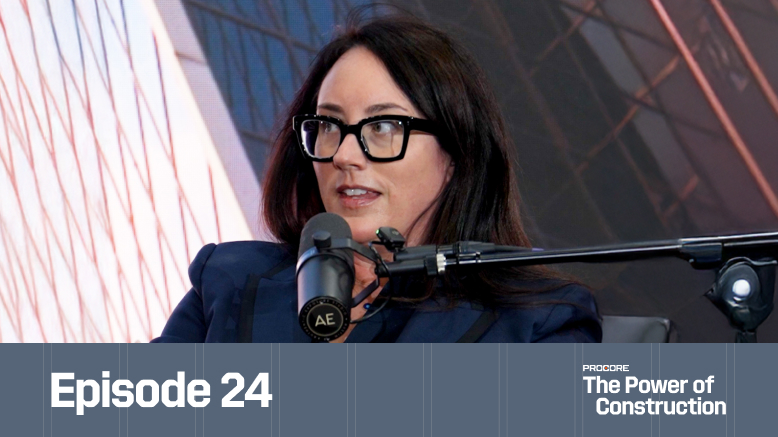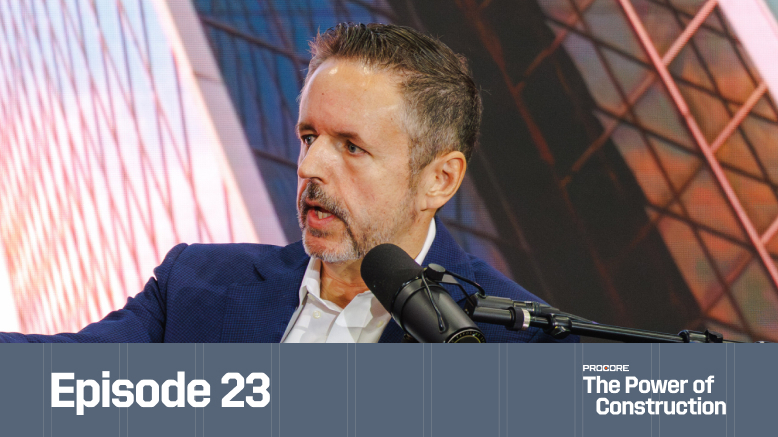— 5 min read
The Construction Workforce Gap and the Missing Link
Last Updated Oct 7, 2025
Zach Fields
Founder & Executive Director
Zach Fields is the Executive Director and Founder of Team Leading Edge, an organization dedicated to mentoring the next generation of construction professionals. His leadership is backed by more than 15 years of experience in the construction industry. Zach has held a variety of roles in construction, including safety manager and project manager at family-owned subcontractor Knight Construction.
Kama Offenberger
Contributing Writer
Kama Offenberger is a freelance content writer who contributes to Procore. Kama has over a decade of freelance editing and writing as well as 15 years of experience teaching writing and literature at the college level.
Last Updated Oct 7, 2025

The construction industry is facing a significant numbers challenge: around 649,300 annual job openings over the next decade, with 41% of workers 45 or older. That combination is intensifying the urgency for new, skilled talent.
Efforts are already underway to address these issues through traditional means like career days and outreach campaigns, many of which are student-focused. And while they are important, these steps aren’t sufficient on their own to turn things in the right direction.
Educators are a central component to future growth in the construction industry. That’s why industry veteran Zach Fields founded the nonprofit Team Leading Edge, which partners with high schools to integrate real-world construction tools and practices.
Table of contents
On the leading edge
Zach Fields has spent nearly two decades in the construction industry, and has seen it from all sides — from toting shingles to managing huge commercial projects.
He believes that construction can provide a pathway to success, helping people create a fulfilling life and career. He founded Team Leading Edge to help "bridge the educational, technological, and social gap between the classroom, boardroom and jobsite" — with a special focus on construction educators.
Why educators are the highest-ROI lever
To truly prepare students for construction careers, the industry has to try a new approach and bring in the missing link — educators.
Zach focuses on forging intentional partnerships as the key to up-leveling teachers, modernizing programs, and building a durable talent pipeline.
According to Zach, one equipped teacher can influence up to 150 students per year. This translates to greater sustainability, lower company costs, and improved student mastery and performance. Ultimately, it boosts a construction company’s return-on-investment (ROI).
Looking at other industries, such as nursing, high school programs have a professional focus, which elevates their perception and outcomes. Construction programs in high schools can raise the bar by following these existing models.
"We aim to see high school construction programs operate at the same level of professionalism as nursing or STEM programs. That starts with up-leveling the teachers and making sure students are not, for example, trying to put shingles on in flip-flops and flannel pajama pants," Zach says. "When we invest in and respect the educational component, students outcomes and the industry's talent pipeline will reflect it."
Advancing construction education programs
Modernizing classrooms and labs is step one to creating a more effective learning environment.
To do their best work, educators need access to current technology and software integrated into their daily instruction. This enables educators to teach current practices and methods aligned with industry standards as part of their existing curriculum.
"Don't just lecture about modern construction management; let students draw on a digital platform, cloud up documents, or put out a simulated RFI. The goal is to use the exact technology that they will encounter in the real world," Zach says.
Connecting educators with the industry
Giving educators a deeper, more involved role is another valuable tactic. This might include:
- Organizing jobsite tours and “teach-the-teacher” days
- Providing guest lectures and hands-on training for new technology
- Inviting educators to association meetings and industry events
- Sponsoring conference attendance
In each of these areas, it’s important to cultivate meaningful experiences by sticking to high-quality events, such as Groundbreak.
Providing tools, equipment and support
Educators need access to the proper materials to make their lessons more effective. Team Leading Edge asks construction companies to donate upgraded hardware to boost efforts in providing students with hands-on experience with working with construction tools.
"Your company’s old hardware—like tablets and laptops—may not be useful to you anymore, but it can be extremely valuable to high school construction programs," Zach explains. "By donating your upgraded equipment as an in-kind donation, you receive a tax benefit and help provide students with the real-world tools they need to succeed."
As Zach explains, Team Leading Edge also funds teacher certifications and professional development. They signal their respect for educators’ time and elevate the quality of their programs by paying them $250 to complete a Procore Certification.
Expanding teacher knowledge
The best educators never stop learning, but many teachers don’t have access to the resources they need. Offering one-on-one mentorships with industry professionals gives them access to current insights in the field.
Similarly, inviting them to things like plant and factory tours provides real-world context they can share with their students.
"Consider hiring construction teachers for summer internships," Zach offers. "This mutually beneficial partnership provides educators with real-world, hands-on experience and a good-paying job, while your company gains skilled, seasonal labor and helps close the knowledge gap for the next generation of the construction workforce."
Making training standard: From taboo to table stakes
When it comes to ongoing training, the construction industry can learn a lot from the past. Safety programs went from being lower priority to an industry standard, and something owners and general contractors require in their bids and contracts.
Applying the same mechanism to training will help promote industry growth. For example, integrating training or continuing education requirements into bids will help it become standard practice.
"The mechanism that standardized safety can be used to build a skilled workforce. If owners and general contractors begin requiring a training or continuing education component in their bids and contracts, training will move from being taboo to being standard practice," Zach says.
The correlation between training and improved ROI is already clear. In 2024, the industry had more than 451,000 apprentices, a 22% increase over the previous five years.
That training correlates with a 25% increase in retention and a 20% increase in productivity. In productivity-driven trades like commercial drywall, those upticks are critical to ROI.
Invest in educators to secure the future.
The workforce gap is a widespread concern, and leaders in construction have a unique opportunity to start closing it.
Team Leading Edge is spotlighting the importance of establishing strong, lasting partnerships with educators as one of the most scalable ways to close the skills gap and deliver job-ready professionals to the market.
Bringing construction management software into classroom lessons, welcoming teachers to professional events, and providing vital tools for students can help put the missing link into place and move the industry forward.
Was this article helpful?
Thank you for your submission.
100%
0%
You voted that this article was . Was this a mistake? If so, change your vote
Scroll less, learn more about construction.
Subscribe to The Blueprint, Procore’s construction newsletter, to get content from industry experts delivered straight to your inbox.
By clicking this button, you agree to our Privacy Notice and Terms of Service.
Thank you!
You’re signed up to receive The Blueprint newsletter from Procore. You can unsubscribe at any time.
Categories:
Written by
Zach Fields
Founder & Executive Director | Team Leading Edge
Zach Fields is the Executive Director and Founder of Team Leading Edge, an organization dedicated to mentoring the next generation of construction professionals. His leadership is backed by more than 15 years of experience in the construction industry. Zach has held a variety of roles in construction, including safety manager and project manager at family-owned subcontractor Knight Construction.
View profileKama Offenberger
Contributing Writer | Procore Technologies
Kama Offenberger is a freelance content writer who contributes to Procore. Kama has over a decade of freelance editing and writing as well as 15 years of experience teaching writing and literature at the college level.
View profileExplore more helpful resources

How Are Partnerships in Construction Being Redefined?
In a market where cost, speed, and quality are table stakes, owners are demanding more than projects delivered on time and on budget. They want trusted partners who bring strategy,...

Bid Triangulation: How Owners, GCs, and SCs Each Benefit
Bids do not live on costs alone: While costs matter, they don’t tell the whole story. A systemized three-bid approach that expands the field of candidates reveals the gaps hiding...

Bid Triangulation: Better Bidding for Better Projects
Systemized bidding lays the groundwork for a project delivered on time and on budget — but true discipline collects multiple quotes to maximize efficiencies and minimize risk. Collecting three bids,...

Who Owns Construction’s Intelligence?
In this episode of The Power of Construction, we chat with Hugh Seaton, CEO of The Link.ai, to step past the buzz around tools and features and unpack what true...
Free Tools
Calculators
Use our calculators to estimate the cost of construction materials for your next project.
Templates
Find a template to help you with your construction project tasks.
Material Price Tracker
Get the latest U.S. retail prices and view historical trends for common building materials.
Glossary
Explore key terms and phrases used in the industry.
